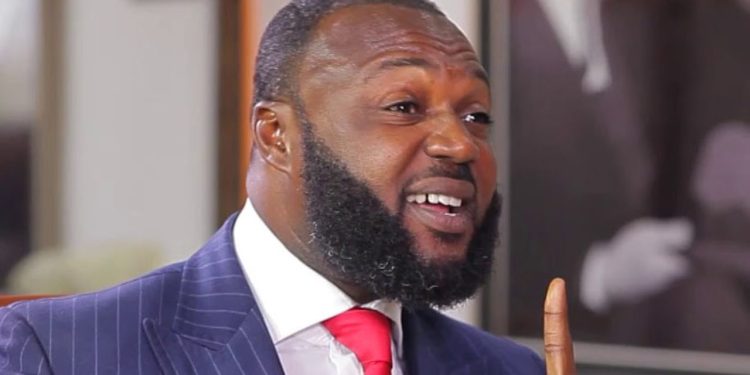Founder of defunct Capital Bank, William Ato Essien has admitted that the bank faced severe financial challenges before the revocation of its license by the Bank of Ghana.
These challenges include many non-performing loans, toxic assets and insolvency. He made these revelations while he was led by his lawyer Baffuor Gyau Ashia to testify as he put up his Defence.
Mr Ato Essien had in 2019 alleged that Finance Minister Ken Ofori Atta and his partner Keli Gadzekpo had attempted to purchase Capital Bank in 2016.
This was in an interview with the host of Good Evening Ghana, Paul Adom Otchere.
“If the Bank was that bad, would the current Finance Minister and the board chairman of Enterprise Keli Gadzekpo come to my office to say we are interested in buying Capital Bank? Ken Ofori-Atta came to my office in 2016 to make that proposal,” he said.
Testifying in Court on Thursday, Mr Essien detailed the financial troubles of the Bank. He first admitted that the Bank was below the Capital Adequacy Ratio set by the Bank of Ghana.
“It meant as per the ratios from the central Bank; we were insolvent. It is a normal occurrence. “ he said. He, however, argued that the Bank was in a position to correct this.
“Injection of more capital would have corrected our insolvent status to a solvent status. Number two: Classification of non-performing loans will make room for significant improvement as far as our solvency status is concerned. Finally recovered from the bad Bank to income surplus,” he continued.
He gave the following explanation on what accounted for the state of the Bank
“The non-performing loans came about as a result of the migration and the peculiar circumstance under which capital bank had metamorphosed from microfinance to a savings and loans.
“The Central Bank issued us with a savings and loans license, not as a new company. And so my lord, when you are a savings and loans, the treatment and regulations from the central bank is totally different as opposed to when you are a money lending organisation and microfinance.”
On non-performing loans, he continued, “From day 30, day 60, it is reported as standard. From day 61 to 90, it is written as substandard. From day 91 to day 120, it is reported as doubtful. From day 121 to day 150, it is reported as bad. And from day 151 to 180, it is reported as a loss.
“That means if six months of loans that we have given hadn’t been paid back, the central bank expects that you provision that as a loss. So just from 2000 to 2008, my lord is in excess of seven and half years.
“This rule did not apply when we were operating as a microfinance and money lending company, so when you were asked by onsight examiners from the central Bank to provision 5.7 million on the back of this 180 days classification when you do that there will not be any institution.
“Number two: this principle was taken over from the savings and loans to be a universal bank at the time we came to a universal bank. This 5.7 million, which we had indicated to the central bank that we were unable to provision against our capital, had grown from the 5.7 million in the back of a 10% interest that we charged at the microfinance level.
My lord, the situation even grew worse when we became a universal bank. At the universal bank level, you are required to put aside 25% of your liabilities as prudential requirements and if it is ¢109, you only had access to 75 cedis to work with, yet you are paying interest in the 100 cedis.
“These three things: classification, regulated interest charge and demand for prudential requirements are what undermined all the efforts that we made to recover a principal amount of ¢4.9 million out of the ¢5.7 million, yet it didn’t make any significant difference because this has been accumulating interest upon interest.
Between 2013 to 2015, the Bank’s total non-performing loans, together with the shareholders by default loans, had been put together to the tune of ¢620 million. So the non-performing loans had now produced a reclassification that had necessitated the separation of the Bank’s operation from savings and loans from that of a universal bank.
“This ¢620 million could not be provided for because if we did, as a bank, the entire gains we had made was going to be wiped off. We, therefore, took two major decisions. The creation of a bad bank and a good bank. An accounting principle that is universally accepted and used. This ¢620 million toxic asset was going to be the basis for the creation of the bank.”
Capital Bank was one of the first banks that collapsed after the massive clean-up of financial institutions by the Bank of Ghana (BoG) starting in 2017.
Mr. Essien and other accused persons have been variously charged with stealing, money laundering and conspiracy to steal. The case has been adjourned to November 25, 2021.










Discussion about this post